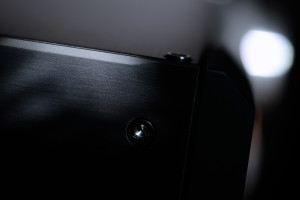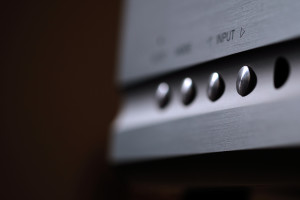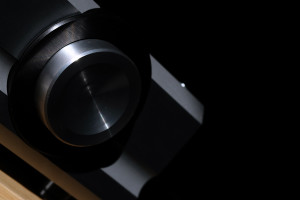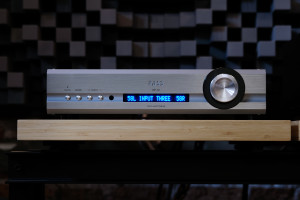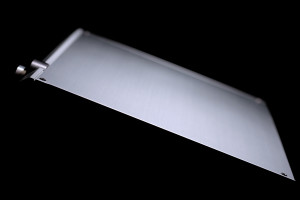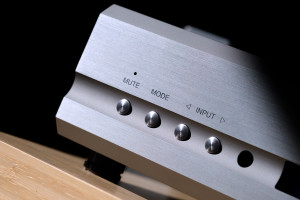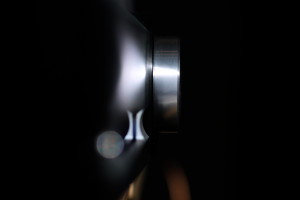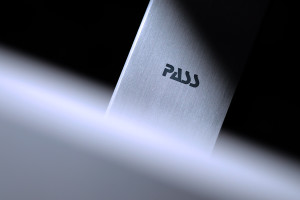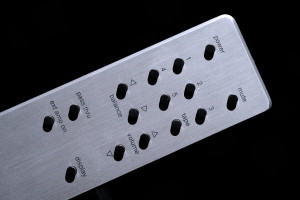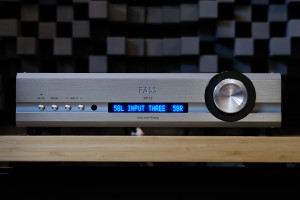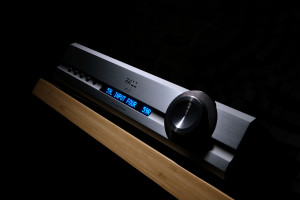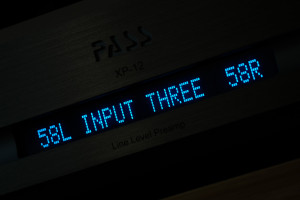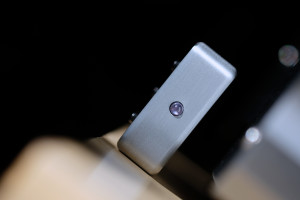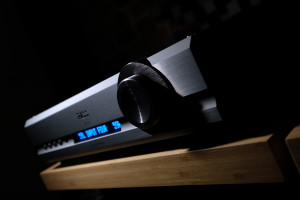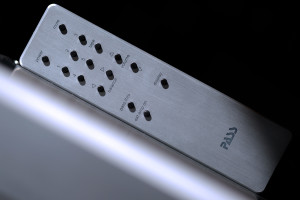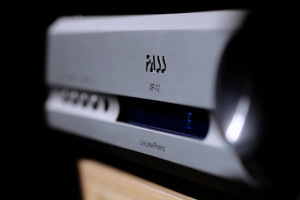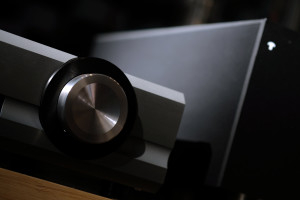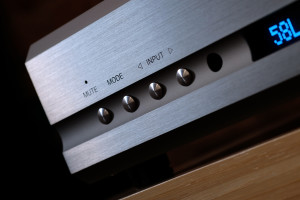It’s been almost two years since my last Pass Labs adventure. The Munich show is just around the corner, hence timing to write to this company’s spokesman Desmond seemed to be a spot on. One mail led to another and that’s how Pass Labs XP-12 line stage made a quick stop at my place prior to being sent to Srajan. Enjoy!
Introduction
Time surely goes by. I got myself familiar with FirstWatt F7 by Nelson Pass in early 2016, then one year later I had the pleasure to review Pass Labs HPA-1 here. This machine designed by Jam Somasundram was meant to work with headphones in the first place and as such it turned out to be one of the finest of its kind to my ears. However, as a preamplifier it proved to be potent enough to easily keep up with a proper $5’000 line stage by Sanders Sound Systems. Not only this, my subjective ears favoured the Pass and this very surprising result gave me something to think about. If the HPA-1 outside of its core task was this good, then what would a standalone preamplifier by the same manufacturer do?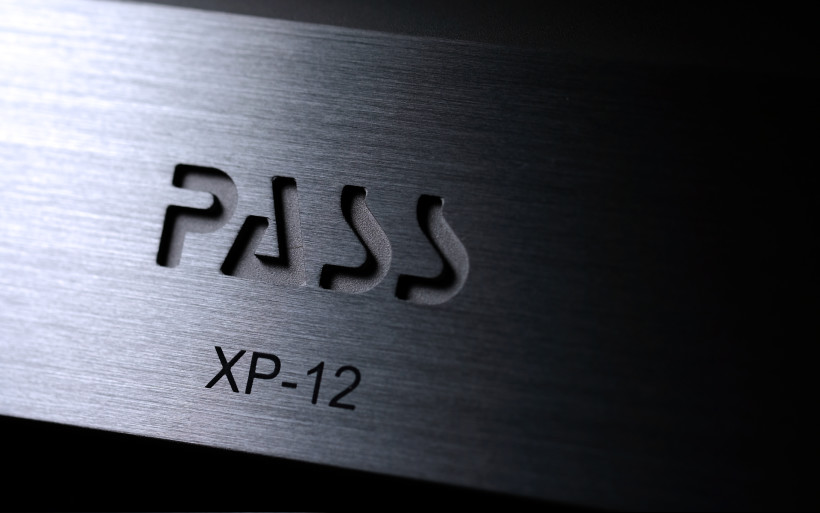 Now let’s backtrack to May 2018. Back then, in one of Munich’s M.O.C rooms I was introduced to Pass Labs XP-12 for the very first time. Desmond Harrington explained that this product was designed by Nelson’s business partner Wayne Colburn. As one of the most known transistor sifus, the former gent needs no introduction, whereas 25 years of experience and many successful preamps make the latter individual a top tier specialist, who is also responsible for all Pass Labs hardware of the sort.
Now let’s backtrack to May 2018. Back then, in one of Munich’s M.O.C rooms I was introduced to Pass Labs XP-12 for the very first time. Desmond Harrington explained that this product was designed by Nelson’s business partner Wayne Colburn. As one of the most known transistor sifus, the former gent needs no introduction, whereas 25 years of experience and many successful preamps make the latter individual a top tier specialist, who is also responsible for all Pass Labs hardware of the sort. In early March 2019 I learnt that the Pass Labs team had their hands full. Keeping up with ongoing demand this operation’s well-developed distribution network created meant no loaners anytime soon, or so I thought. However, one XP-12 originally scheduled to go to Srajan took a small detour and landed at my place first. This turn of events indicated team effort quite similar to what the two of us did with Nelson’s FirstWatt F7 in early 2016. The history not only repeated itself nicely, but did so with the same audio house involved. What are the odds? The 6moons.com article is online already and now’s the time to tell the full Pass Labs XP-12 tale here.
In early March 2019 I learnt that the Pass Labs team had their hands full. Keeping up with ongoing demand this operation’s well-developed distribution network created meant no loaners anytime soon, or so I thought. However, one XP-12 originally scheduled to go to Srajan took a small detour and landed at my place first. This turn of events indicated team effort quite similar to what the two of us did with Nelson’s FirstWatt F7 in early 2016. The history not only repeated itself nicely, but did so with the same audio house involved. What are the odds? The 6moons.com article is online already and now’s the time to tell the full Pass Labs XP-12 tale here.
Build
Pass Labs preamps are divided into two series; Xs and XP. The former range sports two top of the line models (Xs Phono and Xs Preamp), whereas the latter consists of five items in total; XP-10, -12, -20, -22 and -30. New goods in this manufacturer’s portfolio emerge once every several years, which is rare by today’s standards, but there has to be a valid reason for this to happen. The entry XP-10 upgraded with beefier power supply, output stages and quieter transformer had to introduce improvements significant enough for the Pass team to have today’s hero released. Just as the XP-10, this one has all its innards stuffed into a single box, two of these or more are reserved for pricier goods.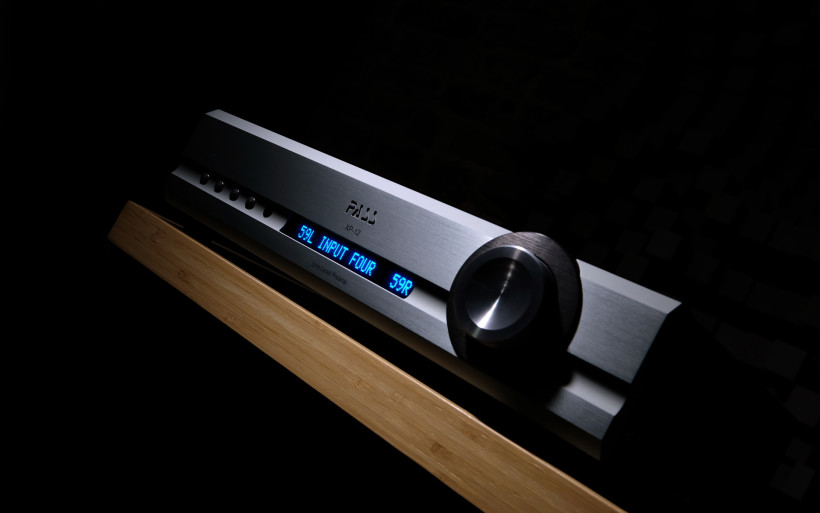 Pass Labs XP-12 arrived dressed in double cardboard box. A handy quality aluminium RC found inside had every button needed to operate the product from distance. Measurements of (WxHxD) 43x10x32cm and 7.7kg mass made the American a breeze to carry around and handle on my photo bench. The XP-12 is a truly balanced class A machine similar to Pass Labs amps, though with lower distortion. As far as numbers go, power consumption is 30 watts, gain is 9.3dB, crosstalk goes beyond 100dB, FR at 10Hz is +/-0.5dB and -1dB at 100kHz, then there’s 15uV of residual noise and THD of 0.001%@1kHz seals the deal.
Pass Labs XP-12 arrived dressed in double cardboard box. A handy quality aluminium RC found inside had every button needed to operate the product from distance. Measurements of (WxHxD) 43x10x32cm and 7.7kg mass made the American a breeze to carry around and handle on my photo bench. The XP-12 is a truly balanced class A machine similar to Pass Labs amps, though with lower distortion. As far as numbers go, power consumption is 30 watts, gain is 9.3dB, crosstalk goes beyond 100dB, FR at 10Hz is +/-0.5dB and -1dB at 100kHz, then there’s 15uV of residual noise and THD of 0.001%@1kHz seals the deal.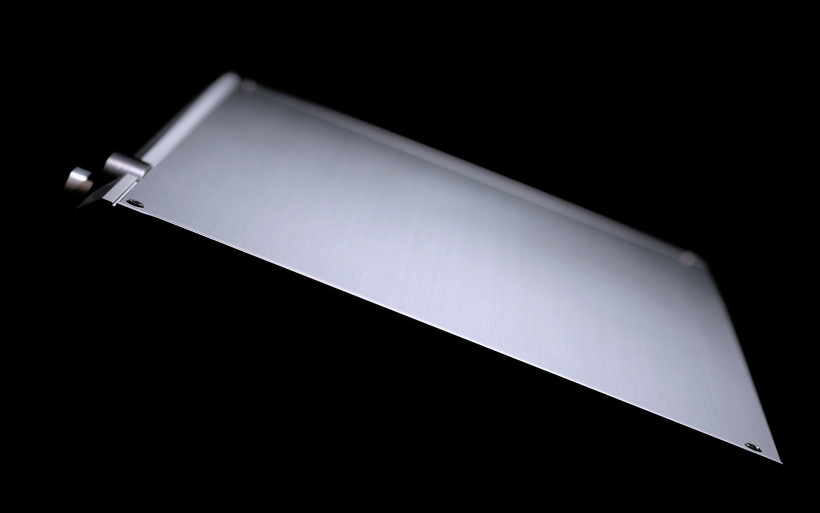 Pass Labs XP-12 shares visuals with many other products by the same manufacturer, it’s obvious from the get-go who made it. Interestingly, various XS series machines differ in number of boxes, but sport the very same thick aluminium front panel nicely trimmed on each side, which is the key reason behind their distinctive and utilitarian look. Excess or flamboyance never was a part of Pass Labs DNA, on the contrary to ruggedness, practicality and fine assembly. Needless to say, the XP-12 sent to me showed nothing less. When viewed up close, it’s quite clear that this is quality tank alike item put together with utmost attention to details. Just as the HPA-1 years back, today’s hardware yours truly found as minimalist and elegant. Very.
Pass Labs XP-12 shares visuals with many other products by the same manufacturer, it’s obvious from the get-go who made it. Interestingly, various XS series machines differ in number of boxes, but sport the very same thick aluminium front panel nicely trimmed on each side, which is the key reason behind their distinctive and utilitarian look. Excess or flamboyance never was a part of Pass Labs DNA, on the contrary to ruggedness, practicality and fine assembly. Needless to say, the XP-12 sent to me showed nothing less. When viewed up close, it’s quite clear that this is quality tank alike item put together with utmost attention to details. Just as the HPA-1 years back, today’s hardware yours truly found as minimalist and elegant. Very.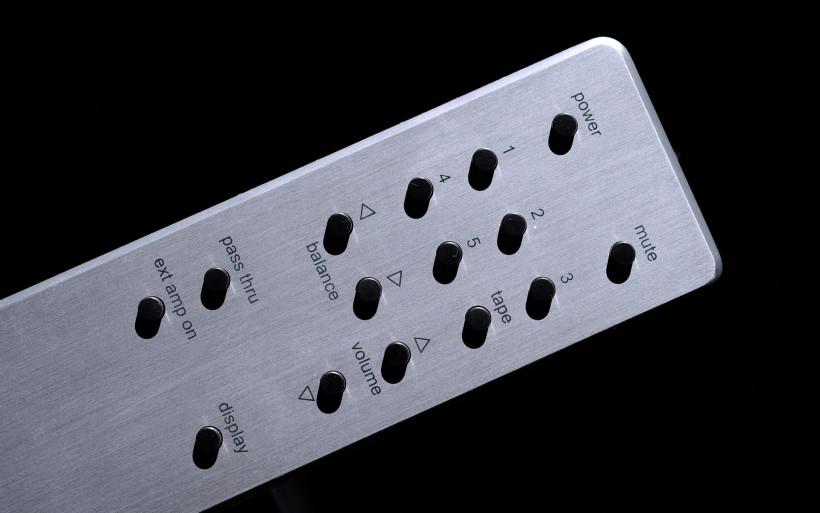 A small curved concave which runs all the way through the XP-12’s front sports four aluminium buttons; the self-explanatory ‘mute’ with a small LED a bit above going blue if engaged, then ‘mode’ responsible for dimming (two brightness levels and off) the fluorescent screen and two input selectors. The IR receiver next in line neighbours with perfectly readable black-on-blue display and endlessly rotating aluminum volume knob surrounded via thick black ring closes the list. The XP-12 sits on four aluminium feet loaded with felt washers and the usual suspects are found on its rear; an IEC inlet with self-replaceable fuse and the main on/off switch, a trigger socket, two outputs (1 x RCA and 1 x XLR) and five inputs (3 x RCA and 2 x XLR) in total. The fifth input can be set as unity buffer (0dB gain at max. vol. level) for home theater mode and is available only via RC. All in all, the XP-12 has everything a proper line stage should and its finish is top notch. I expected nothing less, it’s a Pass.
A small curved concave which runs all the way through the XP-12’s front sports four aluminium buttons; the self-explanatory ‘mute’ with a small LED a bit above going blue if engaged, then ‘mode’ responsible for dimming (two brightness levels and off) the fluorescent screen and two input selectors. The IR receiver next in line neighbours with perfectly readable black-on-blue display and endlessly rotating aluminum volume knob surrounded via thick black ring closes the list. The XP-12 sits on four aluminium feet loaded with felt washers and the usual suspects are found on its rear; an IEC inlet with self-replaceable fuse and the main on/off switch, a trigger socket, two outputs (1 x RCA and 1 x XLR) and five inputs (3 x RCA and 2 x XLR) in total. The fifth input can be set as unity buffer (0dB gain at max. vol. level) for home theater mode and is available only via RC. All in all, the XP-12 has everything a proper line stage should and its finish is top notch. I expected nothing less, it’s a Pass.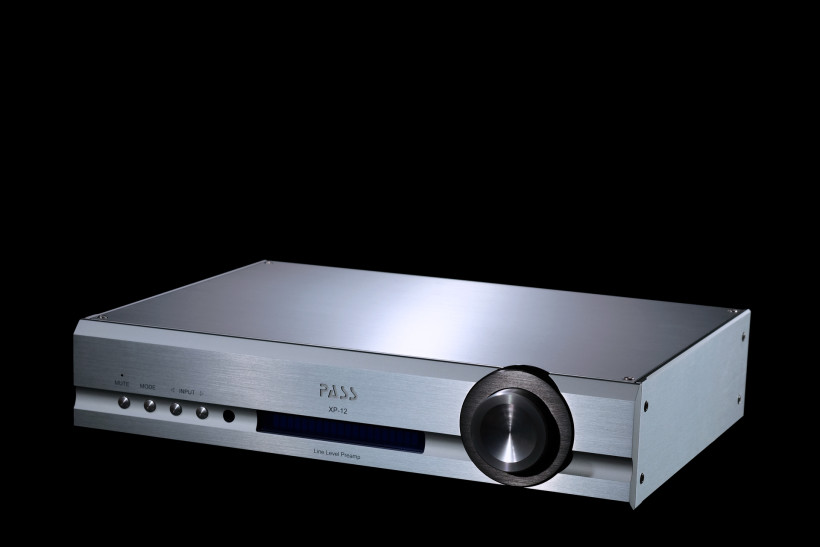 The XP-12’s innards might indicate that it’s not a balanced affair, however Wayne’s circuit doesn’t need twice of everything to be one. The product exploits Jfets by Toshiba as gain devices. Volume (100 x 1dB steps) is executed via a microprocessor-controlled optical shaft encoder married to that large knob on the XP-12’s front, but the attenuation itself happens inside of NJR Muses 72320 chips’ resistor ladder sections. Four small boards with multiple heatsinks in-between look like gain modules, whereas large toroid by Avel Lindberg neighbouring with six capacitors and stabilization circuit nearby form the product’s PSU. The view inside of the XP-12 is very nice, but I won’t even try to guess what’s going on in there specifically.
The XP-12’s innards might indicate that it’s not a balanced affair, however Wayne’s circuit doesn’t need twice of everything to be one. The product exploits Jfets by Toshiba as gain devices. Volume (100 x 1dB steps) is executed via a microprocessor-controlled optical shaft encoder married to that large knob on the XP-12’s front, but the attenuation itself happens inside of NJR Muses 72320 chips’ resistor ladder sections. Four small boards with multiple heatsinks in-between look like gain modules, whereas large toroid by Avel Lindberg neighbouring with six capacitors and stabilization circuit nearby form the product’s PSU. The view inside of the XP-12 is very nice, but I won’t even try to guess what’s going on in there specifically.
Sound
In order to review Pass Labs XP-12, fidata HFAS-S10U handled storage and transport duties, then LampizatOr Pacific DAC (KR Audio T-100 + KR Audio 5U4G Ltd. Ed.) took over to pass the signal to either today’s hero or Kinki Studio EX-P7. Then two distinctively different configurations came into play; Martin Gateley’s soundkaos Libération fronted by FirstWatt F7 and then Kinki Studio EX-B7 monos married to my Boenicke W8. Two LessLoss C-MARC power cords were used in order to extract natural character of each preamplifier. C-MARC speaker cable was also exploited and so were two sets of Audiomica Laboratory Erys Excellence ICs in-between key components. Since Pass Labs XP-12 arrived fresh, the first order of business was to have it running constantly for a bit more than a week and I did my best to stay away before the fixed mark of 175 hours was reached. I can’t say whether my subconscious played tricks on me or not, but the idea of keeping things in the family appeared in an instant and that’s how FirstWatt F7 fronted via today’s XP-12 became a solid starting point for this adventure. This fully American team also determined the most fitting companion. soundkaos Libération was tailored to work best with decks such as Nelson’s F7, everything else of higher power I had nearby at that time would’ve been quite an overkill. My Trilogy 925 married to Martin’s dipoles netted respectable result a while ago, yet the Pass/FirstWatt combo with the Swiss around sent the Brit to pasture rather quickly. This was the first “Hmm, okay, interesting” moment and in order to keep up, we have to backtrack several months to January the 5th and this review.
Since Pass Labs XP-12 arrived fresh, the first order of business was to have it running constantly for a bit more than a week and I did my best to stay away before the fixed mark of 175 hours was reached. I can’t say whether my subconscious played tricks on me or not, but the idea of keeping things in the family appeared in an instant and that’s how FirstWatt F7 fronted via today’s XP-12 became a solid starting point for this adventure. This fully American team also determined the most fitting companion. soundkaos Libération was tailored to work best with decks such as Nelson’s F7, everything else of higher power I had nearby at that time would’ve been quite an overkill. My Trilogy 925 married to Martin’s dipoles netted respectable result a while ago, yet the Pass/FirstWatt combo with the Swiss around sent the Brit to pasture rather quickly. This was the first “Hmm, okay, interesting” moment and in order to keep up, we have to backtrack several months to January the 5th and this review.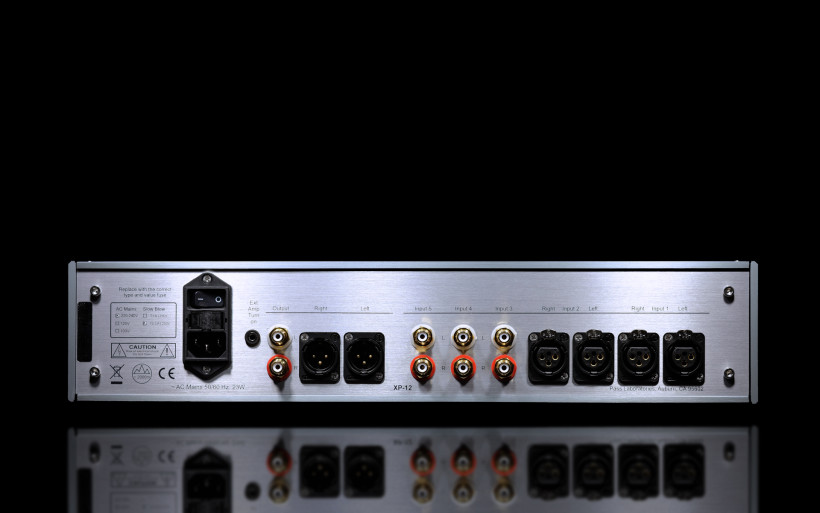 I got familiar with soundkaos Libération quite well since November 2018. It’s time long enough to do so, especially due to its extensive journalistic exploitage along the road. I strongly think that Bakoon AMP-13R reigns supreme with these dipoles still, nothing has changed on this count. I also wrote in my Libération review that the FirstWatt F7 fronted by iFi audio Pro iCAN netted the fuzziest, warmest and least informative result to be quickly viewed as the least satisfying of all hardware combinations involved, albeit still good. However, this twosome rather easily bested on many counts by the 925 back then is old news now, today’s verdict is not alike at all. The XP-12 showed up, turned the tide utmost effortlessly and truly I hadn’t seen it coming.
I got familiar with soundkaos Libération quite well since November 2018. It’s time long enough to do so, especially due to its extensive journalistic exploitage along the road. I strongly think that Bakoon AMP-13R reigns supreme with these dipoles still, nothing has changed on this count. I also wrote in my Libération review that the FirstWatt F7 fronted by iFi audio Pro iCAN netted the fuzziest, warmest and least informative result to be quickly viewed as the least satisfying of all hardware combinations involved, albeit still good. However, this twosome rather easily bested on many counts by the 925 back then is old news now, today’s verdict is not alike at all. The XP-12 showed up, turned the tide utmost effortlessly and truly I hadn’t seen it coming.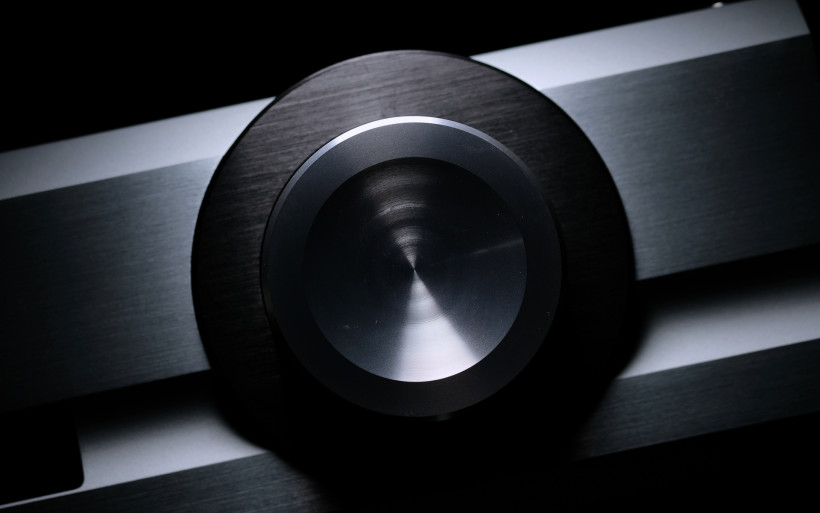 Kinki’s mono amps and my W8 were supposed to be the primary setup to complete this assignment, whereas the F7 meant to be originally used supportively as an innocent placeholder just to keep the Pass running all time. However, the effect the American family pulled off with Libby the owl was not cuddly, overly warm and shy on details, but properly moisturized, vivid, balanced, fabulously explicit and unexpectedly insightful instead. The fabulous interaction between the F7 and XP-12 was mapped as a truly high-tiered synergy at works. Not only it happened within minutes into the very first critical audition, but was also grand enough to be fully grasped as equally shortly. Fairly trained ears will recognize such a distinctively posh well-seasoned aroma in a jiffy as it is unmistakable with anything else. But most importantly, the only change in comparison to the story from January was a preamplifier swap and that’s it, everything else remained intact. This led me to the well-known saying about line stages capable of making or breaking systems, whereas the XP-12 ride backed its validity pointedly enough. If for some reason it shouldn’t, then I honestly haven’t got the faintest what will.
Kinki’s mono amps and my W8 were supposed to be the primary setup to complete this assignment, whereas the F7 meant to be originally used supportively as an innocent placeholder just to keep the Pass running all time. However, the effect the American family pulled off with Libby the owl was not cuddly, overly warm and shy on details, but properly moisturized, vivid, balanced, fabulously explicit and unexpectedly insightful instead. The fabulous interaction between the F7 and XP-12 was mapped as a truly high-tiered synergy at works. Not only it happened within minutes into the very first critical audition, but was also grand enough to be fully grasped as equally shortly. Fairly trained ears will recognize such a distinctively posh well-seasoned aroma in a jiffy as it is unmistakable with anything else. But most importantly, the only change in comparison to the story from January was a preamplifier swap and that’s it, everything else remained intact. This led me to the well-known saying about line stages capable of making or breaking systems, whereas the XP-12 ride backed its validity pointedly enough. If for some reason it shouldn’t, then I honestly haven’t got the faintest what will.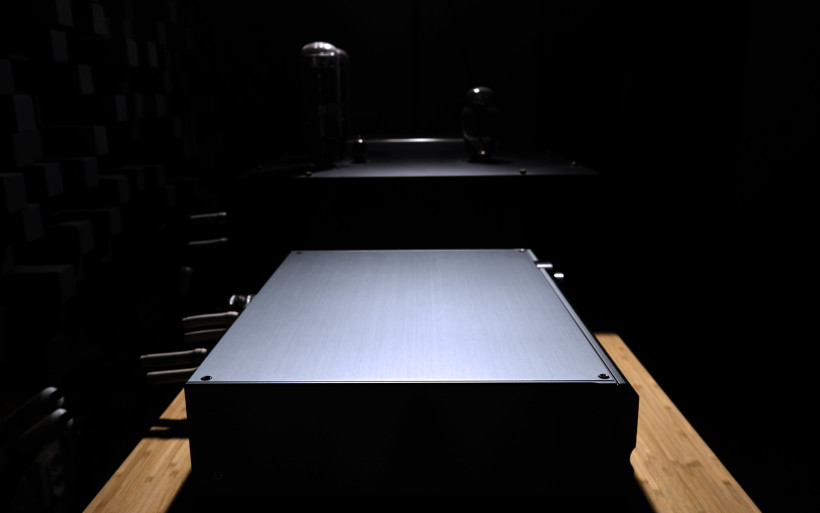 Once I acknowledged what was on, it was high time to introduce the EX-P7. Alongside its kin it formed a very cost-effective team judged as conjoined effort. The Chinese trio scored very high, however the line stage was never evaluated as a standalone affair due to lack of crucial tools back then. Luckily Srajan thoroughly covered the subject here and awarded the EX-P7. The opportunity to have my own take on Liu’s preamp finally revealed itself once the XP-12 arrived, so here we are. In short, the difference between both products is substantial where it matters the most, quite accurately reflected in their price and the TL;DR version is as follows: Pass XP-12 is darker, more earthly, scores higher on information and paints a bit more distant and smaller sound sources, whereas the EX-P7 is more lit up, nervous and bigger on counts such as downstairs presence and instrumental sizing. This brief description one could use to argue that today’s skirmish is a typical chalk and cheese case. It’s not. To properly describe what truly happened, the usual dissective routine wouldn’t do. We have to look elsewhere and narrow this story to several key differences between both contestants.
Once I acknowledged what was on, it was high time to introduce the EX-P7. Alongside its kin it formed a very cost-effective team judged as conjoined effort. The Chinese trio scored very high, however the line stage was never evaluated as a standalone affair due to lack of crucial tools back then. Luckily Srajan thoroughly covered the subject here and awarded the EX-P7. The opportunity to have my own take on Liu’s preamp finally revealed itself once the XP-12 arrived, so here we are. In short, the difference between both products is substantial where it matters the most, quite accurately reflected in their price and the TL;DR version is as follows: Pass XP-12 is darker, more earthly, scores higher on information and paints a bit more distant and smaller sound sources, whereas the EX-P7 is more lit up, nervous and bigger on counts such as downstairs presence and instrumental sizing. This brief description one could use to argue that today’s skirmish is a typical chalk and cheese case. It’s not. To properly describe what truly happened, the usual dissective routine wouldn’t do. We have to look elsewhere and narrow this story to several key differences between both contestants. Canvas for music and grain. These aspects determine how easy it is for our ears to let in all nuances in music; details unseen at first glance yet present sooner or later with hardware capable of depicting them. In time I learnt that all this is very much related to power supply, jitter removal and mastering quality itself. The better all these elements are, the blacker and more orderly our distinctive background gets to have all small bits and pieces suspended in virtual space more visible in the process. The EX-P7 proved to be very tidy and far from sharp, yet the XP-12 upped the ante via hauntingly black image with not a single wrinkle on it. The latter’s utmost grain-free flowing attitude influenced many other things and quickly made yours truly to understand where all the extra money went.
Canvas for music and grain. These aspects determine how easy it is for our ears to let in all nuances in music; details unseen at first glance yet present sooner or later with hardware capable of depicting them. In time I learnt that all this is very much related to power supply, jitter removal and mastering quality itself. The better all these elements are, the blacker and more orderly our distinctive background gets to have all small bits and pieces suspended in virtual space more visible in the process. The EX-P7 proved to be very tidy and far from sharp, yet the XP-12 upped the ante via hauntingly black image with not a single wrinkle on it. The latter’s utmost grain-free flowing attitude influenced many other things and quickly made yours truly to understand where all the extra money went.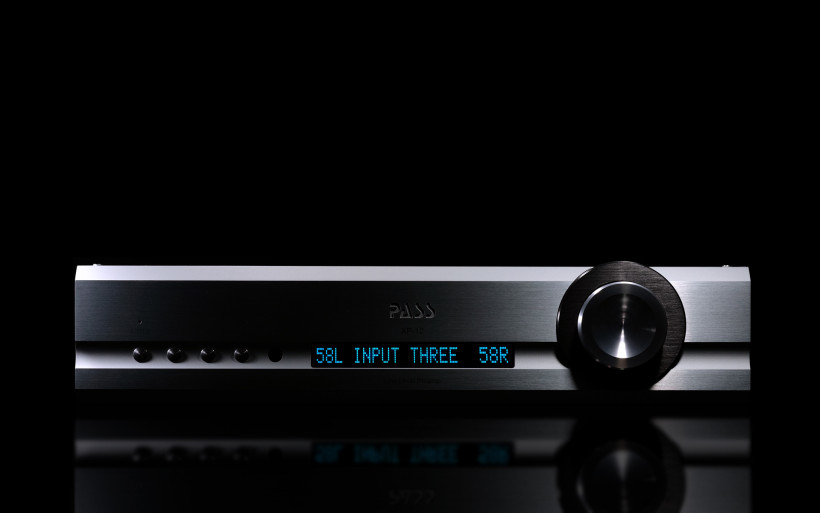 Insight. It determines how and if all information stored in music is delivered. This task can be partially achieved via upped high FR, however this rather blunt weapon can and oftentimes leads to perceptible fatigue. Every single bit of musical content dished with no trickery involved is the key. Instead of shoving details in one’s face, these have to be delivered effortlessly, naturally, smoothly and as a part of something bigger. Simply put, this has to happen with our internal focus mode disengaged, yet when hunger for the tiniest subtleties strikes, they’re all ready to be singled out at will. I believe that this is the ideal detail intake and also one of the greatest virtues of today’s hero. It portrayed each nuance with no effort involved, yet did so in such a natural unaltered fashion that I initially viewed this machine as dim in comparison to the Chinese and more casual. As it turned out shortly after, this was manifestation of the XT-12’s tremendous revelatory power served not via tricks but truly artfully. Once my ears adjusted to the new order, there was no going back. In this context the shinier and hotter EX-P7 was the trickster, albeit a deft one. Just as the Pass it hid nothing, however acted more juvenile and still craved for attention. The XP-12 on the other hand was far past this point, just as a fully grown higher tiered specimen should.
Insight. It determines how and if all information stored in music is delivered. This task can be partially achieved via upped high FR, however this rather blunt weapon can and oftentimes leads to perceptible fatigue. Every single bit of musical content dished with no trickery involved is the key. Instead of shoving details in one’s face, these have to be delivered effortlessly, naturally, smoothly and as a part of something bigger. Simply put, this has to happen with our internal focus mode disengaged, yet when hunger for the tiniest subtleties strikes, they’re all ready to be singled out at will. I believe that this is the ideal detail intake and also one of the greatest virtues of today’s hero. It portrayed each nuance with no effort involved, yet did so in such a natural unaltered fashion that I initially viewed this machine as dim in comparison to the Chinese and more casual. As it turned out shortly after, this was manifestation of the XT-12’s tremendous revelatory power served not via tricks but truly artfully. Once my ears adjusted to the new order, there was no going back. In this context the shinier and hotter EX-P7 was the trickster, albeit a deft one. Just as the Pass it hid nothing, however acted more juvenile and still craved for attention. The XP-12 on the other hand was far past this point, just as a fully grown higher tiered specimen should.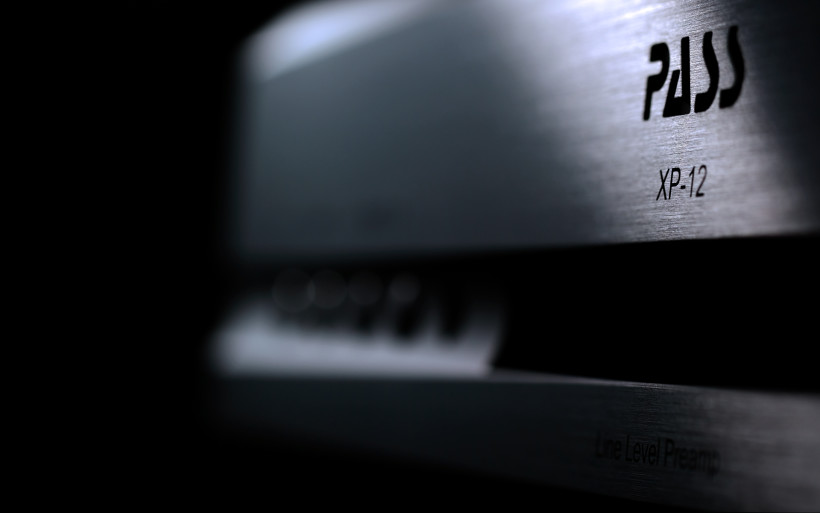 Soundstage. This virtual space oftentimes framed into parameters such as width, height and depth, can also be described as multi-layered or flat, restrictive or open, intimately close or distant, locked in-between speakers to form a bubble or spatially even and fully blown, breathable and moving or uninvitingly stale and lifeless. Differences between compared machines were rather petite on most of these counts; both pulled as equally big and open on-stage acts as far as their canvas grandeur went, though varied in size of components visible in there and this was my main angle at first. But looking elsewhere quickly led me to something as equally distinctive and firm: air. Similar openness shared by the two line stages would imply likeness in sheer amount of oxygen and rightfully so. But how it was wrapped around various virtual sources was the key disparity. It changed a lot.
Soundstage. This virtual space oftentimes framed into parameters such as width, height and depth, can also be described as multi-layered or flat, restrictive or open, intimately close or distant, locked in-between speakers to form a bubble or spatially even and fully blown, breathable and moving or uninvitingly stale and lifeless. Differences between compared machines were rather petite on most of these counts; both pulled as equally big and open on-stage acts as far as their canvas grandeur went, though varied in size of components visible in there and this was my main angle at first. But looking elsewhere quickly led me to something as equally distinctive and firm: air. Similar openness shared by the two line stages would imply likeness in sheer amount of oxygen and rightfully so. But how it was wrapped around various virtual sources was the key disparity. It changed a lot.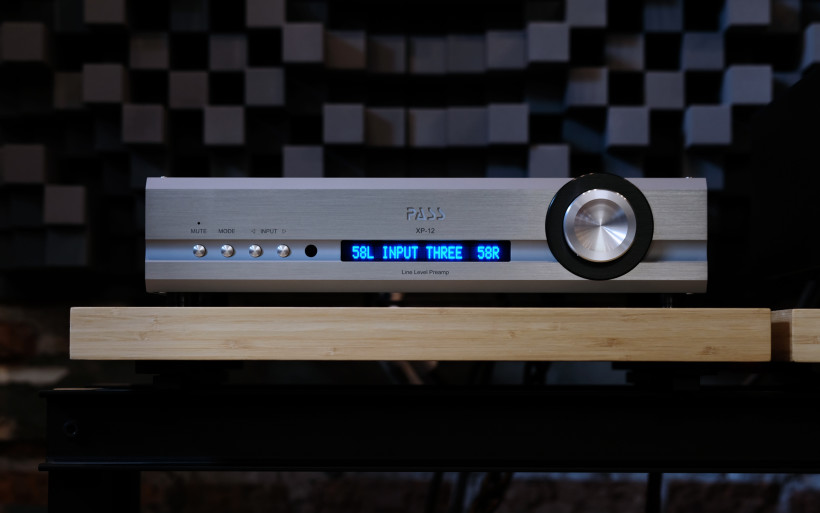 The EX-P7 painted musical components visibly, with no restrictions and so did the XP-12. But air injected by the former was drier in comparison, the American carefully applied additional hydration to score more tangible, vivid and organic result, whereas its inherently grain-free blackness amplified the effect further. Again, in spite of the American’s upstairs somewhat tamed in comparison, all this led to even better insight into events before me. This product not only scored higher on differentiation and suspended all sound sources in livelier, more movable and dignified space, but also separated them in finer fashion and dressed in poshier suits on top of that. Now the XP-12’s dagger went in swiftly and all the way. The blade was then twisted and the final blow delivered.
The EX-P7 painted musical components visibly, with no restrictions and so did the XP-12. But air injected by the former was drier in comparison, the American carefully applied additional hydration to score more tangible, vivid and organic result, whereas its inherently grain-free blackness amplified the effect further. Again, in spite of the American’s upstairs somewhat tamed in comparison, all this led to even better insight into events before me. This product not only scored higher on differentiation and suspended all sound sources in livelier, more movable and dignified space, but also separated them in finer fashion and dressed in poshier suits on top of that. Now the XP-12’s dagger went in swiftly and all the way. The blade was then twisted and the final blow delivered. Refinement. This key distinctive factor separates audio items yours truly considers as very good from hardware he labels as truly impressive. It’s related to neither soundstage size, nor tonal balance or agility, but maturity and seasoning. That’s the feature capable of morphing sound coming out of our speakers into immersive and addictive musical act. It arrives with certain age and if we’ll take the EX-P7 as a fully grown warrior specimen in this context, then the XP-12 is the same tribe’s elder. At this point it all came down to key sound sources both machines portrayed. The Chinese sculpted them as clear, present, texturally multi-layered and pleasantly hefty beings, whereas the Pass raised the score via even more tissue complexity, a bit rounder more moist approach and a spot on contour-to-filler ratio. Simply put, the XP-12 was more alive.
Refinement. This key distinctive factor separates audio items yours truly considers as very good from hardware he labels as truly impressive. It’s related to neither soundstage size, nor tonal balance or agility, but maturity and seasoning. That’s the feature capable of morphing sound coming out of our speakers into immersive and addictive musical act. It arrives with certain age and if we’ll take the EX-P7 as a fully grown warrior specimen in this context, then the XP-12 is the same tribe’s elder. At this point it all came down to key sound sources both machines portrayed. The Chinese sculpted them as clear, present, texturally multi-layered and pleasantly hefty beings, whereas the Pass raised the score via even more tissue complexity, a bit rounder more moist approach and a spot on contour-to-filler ratio. Simply put, the XP-12 was more alive.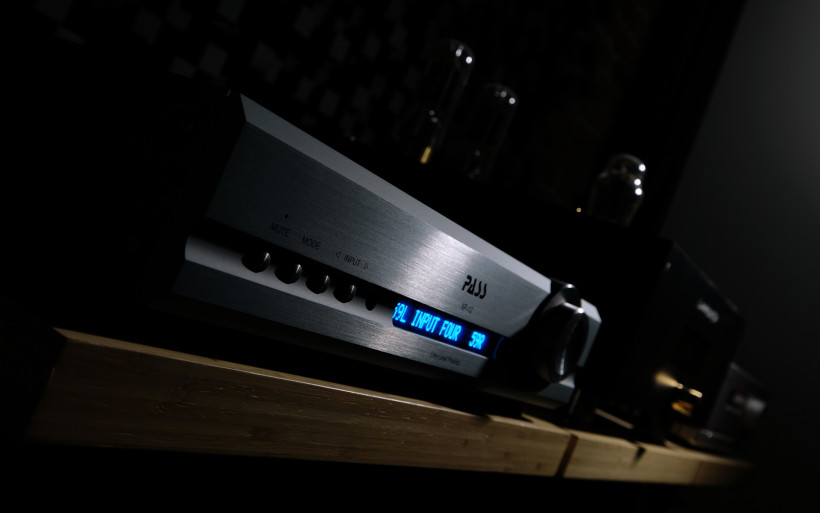 At some point I also understood how fabulously balanced the XP-12 was, not a single thing about its performance was excessive or subpar. Early on its calmer voicing I took as a major flavouring twist not related to quality itself. However, with jumpy repertoire the Pass easily threw punches as hard and quick as the EX-P7, but didn’t elevate bass even one bit to be viewed as tonally more even and coherent. Even though the Chinese sported more shine and spark upstairs, the XP-12 rather easily bested it on decay, timbre and yet again complexity. My ears eventually started to view the former as the one with boosted bass, texturally more pale, shorter up top, flashier, edgier and not as mature in comparison. It finally became clear that the two different quality classes clashed. Nonetheless, I’m very impressed with what the Kinki Studio EX-P7 did. By keeping up with the XP-12 on many counts, Liu’s deck proved its worth and gained my utmost respect.
At some point I also understood how fabulously balanced the XP-12 was, not a single thing about its performance was excessive or subpar. Early on its calmer voicing I took as a major flavouring twist not related to quality itself. However, with jumpy repertoire the Pass easily threw punches as hard and quick as the EX-P7, but didn’t elevate bass even one bit to be viewed as tonally more even and coherent. Even though the Chinese sported more shine and spark upstairs, the XP-12 rather easily bested it on decay, timbre and yet again complexity. My ears eventually started to view the former as the one with boosted bass, texturally more pale, shorter up top, flashier, edgier and not as mature in comparison. It finally became clear that the two different quality classes clashed. Nonetheless, I’m very impressed with what the Kinki Studio EX-P7 did. By keeping up with the XP-12 on many counts, Liu’s deck proved its worth and gained my utmost respect.
Summary
It’s likely that most enthusiasts associate Pass Labs with various amplifiers exclusively and knowing who Nelson Pass is, that’s how I viewed his company for years. Then two springs ago the HPA-1 as a preamp left me very impressed and today’s hero upped the ante even more. That’s why Pass Labs as a manufacturer into amps and preamps means business as equally serious to me now.
On the outside Pass Labs XP-12 looks as utilitarian as the rest of its kin. Stripped from visual flamboyance it might be viewed as a regular deck with nothing special going on. This sensation however, if there’s one to begin with, fades away quickly past the XP-12’s initial inspection. Perfectly machined and matched chassis parts, quality materials, internal cleverness and reliable hassle-free handling indicate admirable put-togetherness and maturity typical for a well-established audio house with manufacturing process down pat. Today’s is a full-fledged Pass, hence ruggedness and form-follows-function look are its visual specialties.
To conclude that the Pass Labs XP-12 simply scored high on the most important count would’ve been a major understatement. It proved me bluntly how impactful line stages can be and significantly elevated my setup’s performance via measures not associated with trickery but top shelf refinement instead; fine balancing act, exceptionally black musical backdrop, tangibility, textural generosity and insight, all dressed in utmost tuneful and sophisticated package. It takes a very skilled engineer to pull this off and now there’s not a single shed of doubt in my mind that Wayne Colburn is one. If you’re after hardware along the lines of Pass Labs XP-12, then this fabulously voiced and polished American class act is mandatory to audition, simple as that. ‘Till next time!
Associated equipment:
- Amplifiers: FirstWatt F7, Kinki Studio EX-B7
- Sources: LampizatOr Pacific (KR Audio T-100 + KR Audio 5U4G Ltd. Ed.)
- Speakers: Boenicke Audio W8, soundkaos Libération
- Preamplifiers: Kinki Studio EX-P7
- Transports: fidata HFAS-S10U
- Speaker cables: Audiomica Laboratory Celes Excellence, LessLoss C-MARC
- Interconnects: Audiomica Laboratory Erys Excellence
- Power components: Gigawatt PC-3 SE EVO+, Gigawatt PF-2 + Gigawatt LC-2 MK2 + Forza AudioWorks Noir Concept/Audiomica Laboratory Ness Excellence/LessLoss C-MARC
- Rack: Franc Audio Accesories Wood Block Rack
- Music: NativeDSD
Retail prices of reviewed components in EU (incl. VAT):
- Pass Labs XP-12: €5’800
Manufacturer: Pass Labs




